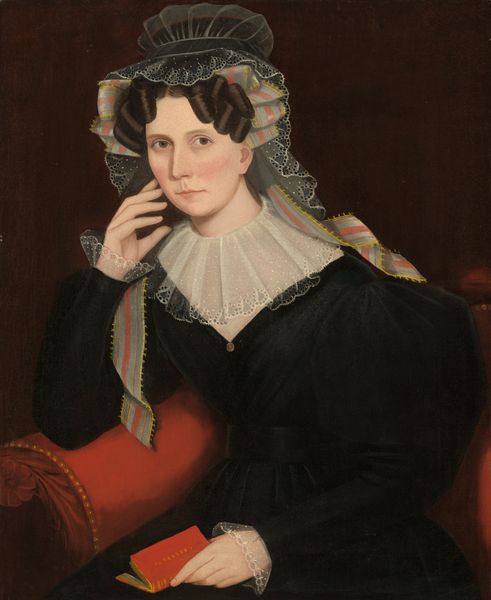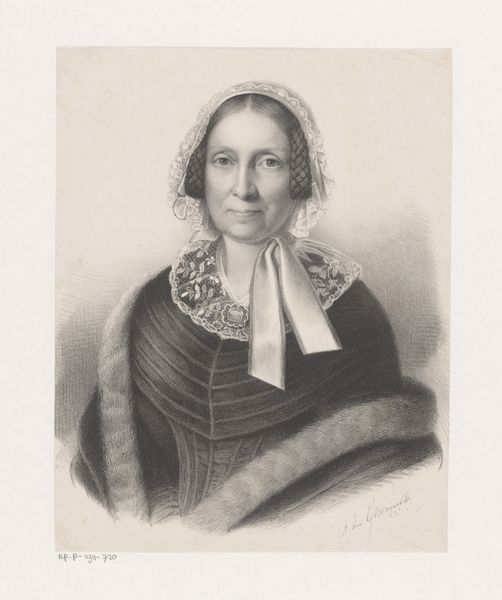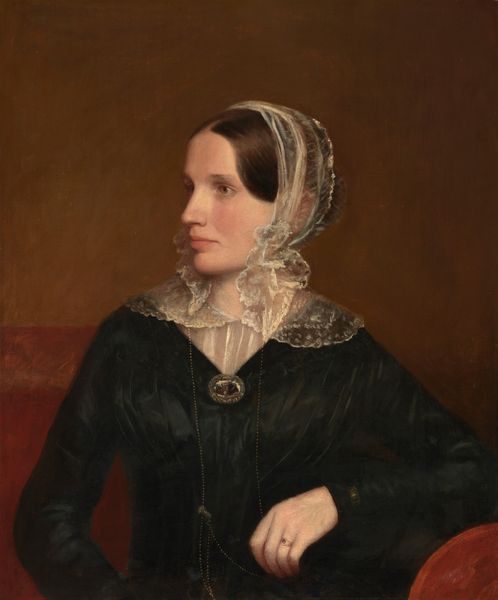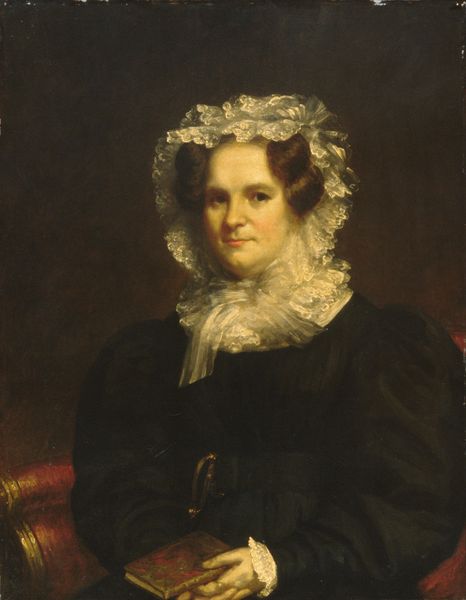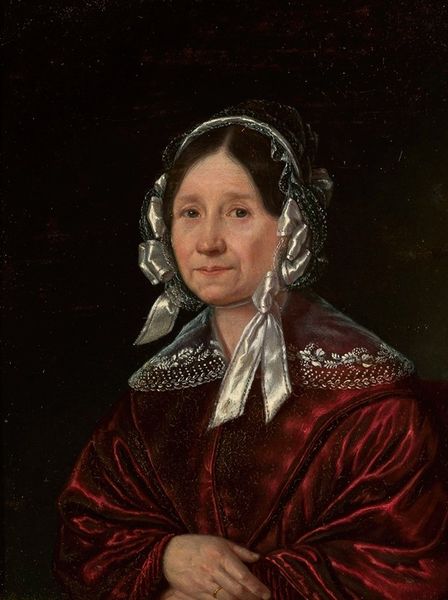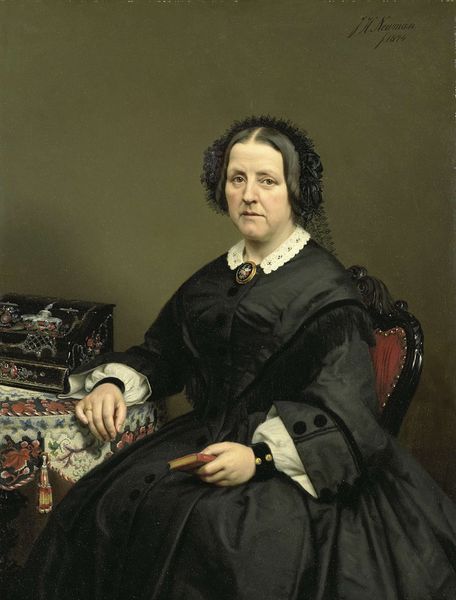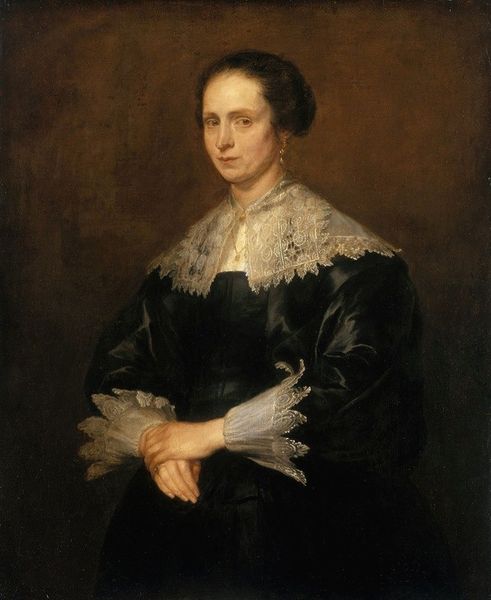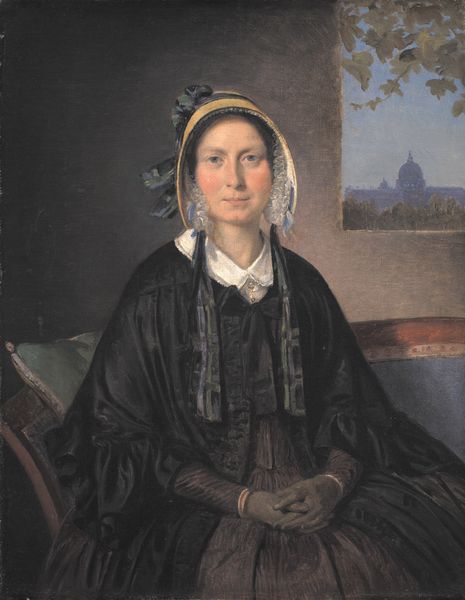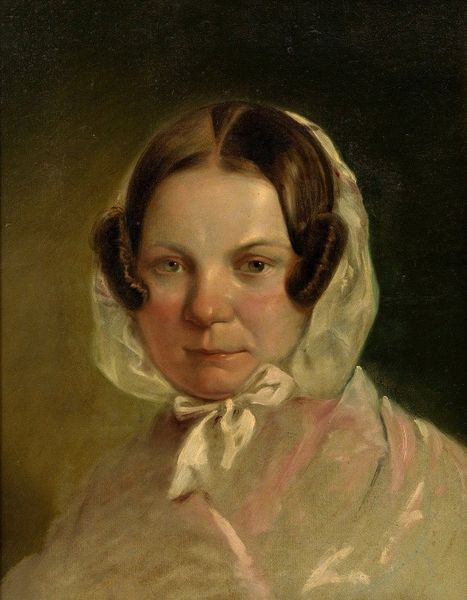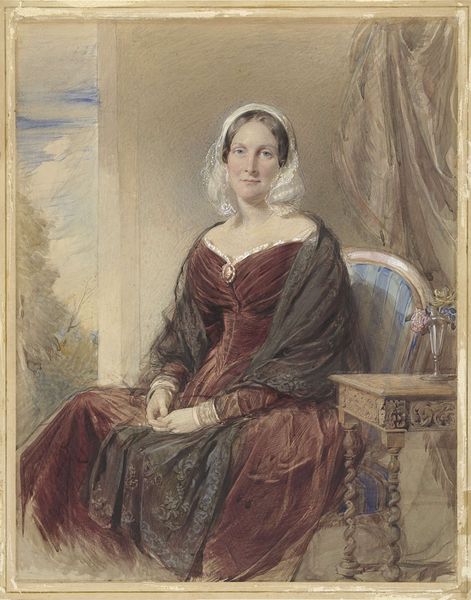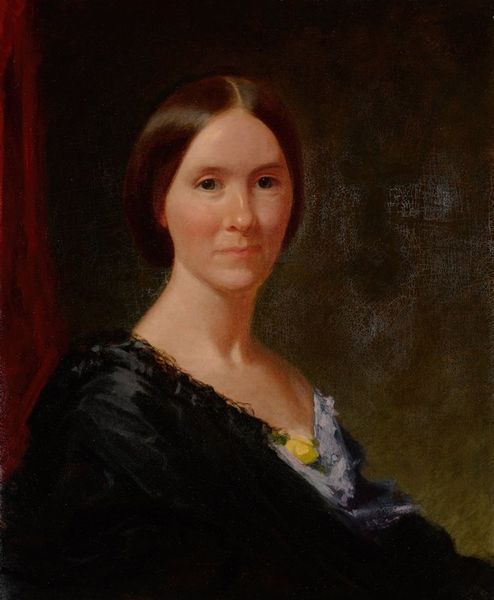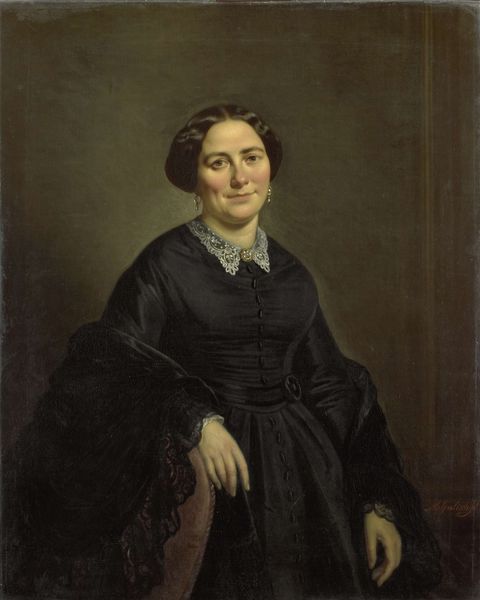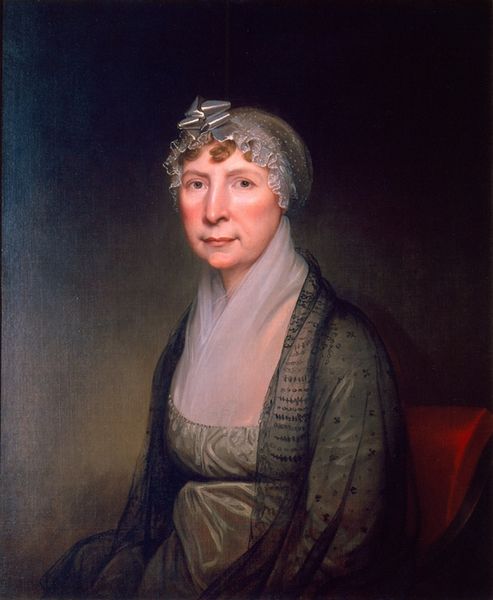
Amalie Elisabeth Freund, f. von Würden. Billedhuggeren H. E. Freunds hustru 1860
0:00
0:00
Dimensions: 79 cm (height) x 62.5 cm (width) (Netto)
Editor: Here we have P.C. Skovgaard's 1860 oil on canvas, "Amalie Elisabeth Freund, f. von Würden. Billedhuggeren H. E. Freunds hustru"—a portrait of a woman who seems both proper and a little weary. I'm struck by the contrast between her dark dress and the bright shawl. What do you see in this portrait? Curator: It's interesting you focus on the contrast. Considering this work, it’s important to recognize that portraiture in 1860 wasn’t merely about capturing likeness; it was deeply intertwined with social standing and the construction of identity. Amalie Elisabeth was not just a woman, but the wife of a renowned sculptor. How might her role as a 'wife of' shape our reading of the portrait? Editor: I guess I hadn't really considered her role beyond the subject. Is it fair to interpret her poised composure as a sign of her place within the social hierarchy? It feels like she's performing a role. Curator: Precisely! And it's worth questioning whose gaze is being centered here. Skovgaard, as a male artist, undoubtedly played a role in shaping this representation. Think about the male gaze and how women were often objectified or idealized in art. Do you think this portrait challenges or reinforces those norms? Editor: It's a lot to take in. Maybe it's both? I think I need to look at more art through a critical theory lens; this really made me consider what isn't immediately visible! Curator: It's a constant process of unveiling! By examining art through social and historical contexts, we reveal the intricate web of power, identity, and representation that shapes our understanding of the world.
Comments
No comments
Be the first to comment and join the conversation on the ultimate creative platform.
